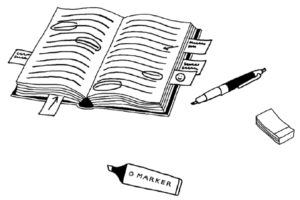Procedure:
- The instructors demonstrate with one or several examples how to master textual difficulties and how to recognize main statements. This works best if the teacher models the corresponding steps and “thinks out loud” in doing so.
- Central to this process are the following two steps, which the students receive in writing or copy from the board:
- Recognize difficult passages, clarify and comprehend: initial reading, repeated reading, searching individually for explanations in the text, encyclopedias, dictionaries, and using internet.
- Recognize key statements: divide the text into logical segments, formulate headings, take notes of key terms.

- Once the procedure is understood by all, the students receive different texts (age appropriate and differentiated for proficiency level) and practice dealing with difficulties and recognizing key statements of a text on their own in accordance with the above two points. This can be done individually or in pairs.
- Concluding with a brief review and an exchange of experiences with this approach.
Remarks:
- Exercises of this kind should, of course, be conducted repeatedly and with different reading materials, ideally with current texts from regular classroom instruction.
- Exercises # 25–27 are closely related and should be presented to and practiced with the students in this context.
- The above referenced steps can be summmarized with the steps in #25 and 27 in a woksheet under the heading “reading strategies”.
- Strategies and suggestions for comprehension of key statements can also be found in volume 5 “Teaching of learning strategies and techniques in HLT” (book 5 of the series “Didactic suggestions for HLT”); see #9 “Marking the most important things in the texts”.






